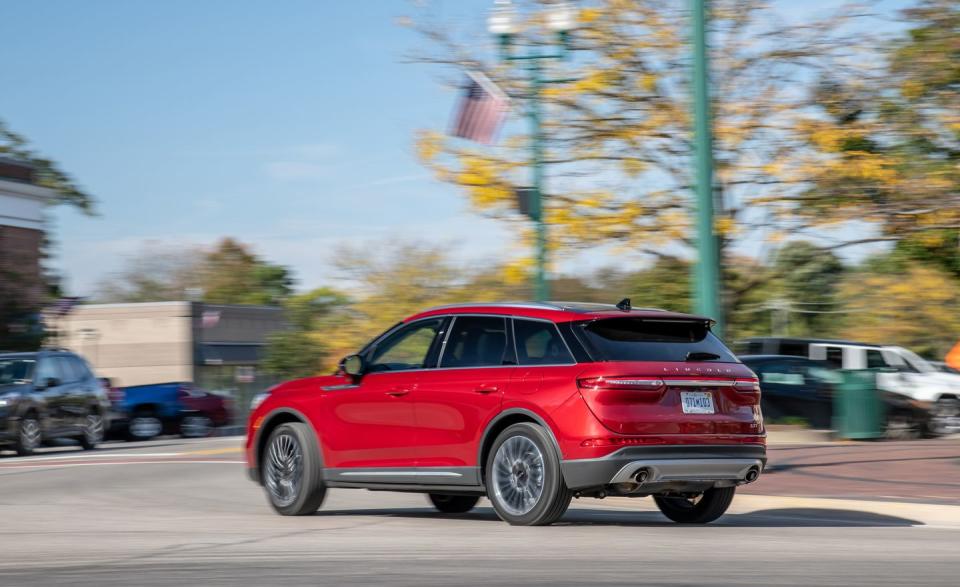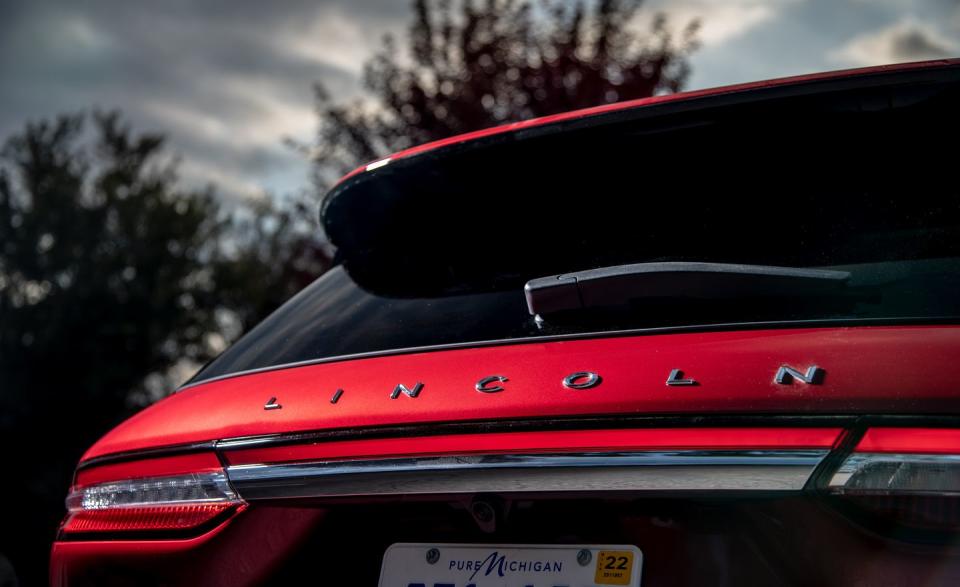2020 Lincoln Corsair Brings Refinement with Little Value

11/7/19 UPDATED: This review has been updated with test results for both the Corsair 2.0T and 2.3T models.
Lincoln would like you to learn a new name: Corsair. Sounds romantic, refined, with a whiff of the 1940s, which sort of works until you learn, or remember, that a corsair is a pirate. Well, pirates do love gold and this new Lincoln is definitely out for yours.
Pirate stuff aside, the new-for-2020 Lincoln Corsair is a Ford Escape deep down under its handsome and upscale exterior. As with its MKC predecessor, the updated Corsair shares most of its bones with the Ford Escape, which itself is all new for the 2020 model year. It supplants the unimaginatively titled MKC model and holds only the entry-level station in the brand's SUV lineup. It is also a convincing adherent to Lincoln's modern ethos.

While its compact transverse-engine proportions aren't quite as fetching as the larger longitudinal-engine Lincoln Aviator's, the Corsair's elegant lines fit right into the new Lincoln showroom, matey.
Confident and Indifferent
From our initial experience with the latest Escape, Lincoln could have done far worse in terms of a donor platform. Both vehicles share a similar strut front suspension. Yet, the Lincoln adopts its own chassis and steering tuning, optional adaptive dampers ($700 on Reserve models only), and a revised multilink rear suspension. We can say that rolling on its larger 19- or 20-inch wheels (18s are standard), the Corsair floated over the glass-smooth byways of Northern California with competence and cushy grace, its steering aloof in feel yet precise, and its body control reasonably in check on curvy back roads. That healthy degree of compliance in the Corsair's suspension translates to a similar amount of isolation when traversing the Third World goat paths of the Midwest, although its larger, optional wheels do occasionally clomp over pavement imperfections and frost seams on the highway.

A firm brake pedal and confident responses to directional changes lend the Corsair a reassuring if lazy comportment on the road. Switching to its Excite driving mode (there also are Normal, Conserve, Slippery, and Deep settings) slightly stiffens the dampers and the effort of the electrically assisted steering, although we couldn’t detect much difference aside from the sharper action that Excite mode brings to the throttle and the unobtrusive eight-speed automatic transmission. But it takes an emergency event to actually raise your pulse when piloting the Corsair, and even then, a phalanx of driver aids—such as standard forward automatic emergency braking, blind-spot detection, and lane-keep assist, as well as optional evasive steering assist—are there to help you from hitting trees and other vehicles. Pushed to their handling limit, both of our all-wheel-drive Corsair test cars—one riding on 19-inch wheels shod with 225/55R-19 Michelin Primacy Tour A/S all-season tires and the other fitted with 20-inch, 245/45R-20 Continental CrossContact LX Sport ContiSilent all-seasons—returned the same, modest 0.83 g of lateral grip around the skidpad and stopped from 70 mph in about 165 feet, which is respectable for the class.
The Corsair Standard—that’s a trim level, not a benchmark—starts at a reasonable $36,940 and comes with a 250-hp turbocharged 2.0-liter inline-four carried over from the previous MKC; adding all-wheel drive is $2200 on all versions. Stepping up to the $43,625 Reserve model unlocks an optional 295-hp turbo 2.3-liter inline-four ($1140), which only can be had with all-wheel drive. Both engines quietly hum in the background, even at full throttle, and serve up ample low-end torque—310 lb-ft from the 2.3-liter, 275 lb-ft from the 2.0—for drama-free acceleration. Thanks in part to the Corsair weighing a claimed 100 pounds or so less than its MKC predecessor, even the standard engine can deploy adequate if uneventful grunt for passing maneuvers at highway speeds. Both on the road and at the test track, the difference in performance between the two engines essentially is a wash. Our 3988-pound 2.0-liter example reached 60 mph in 6.1 seconds, covered the quarter-mile in 14.7 at 93 mph, and accelerated from 50 to 70 mph in 4.4 seconds. The 2.3-liter model, which carried an additional 70 pounds, was but a tenth quicker both to 60 mph and from 50 to 70 mph yet gave up a tenth to its less powerful sibling in the quarter despite posting the same trap speed.

 Yahoo Autos
Yahoo Autos 